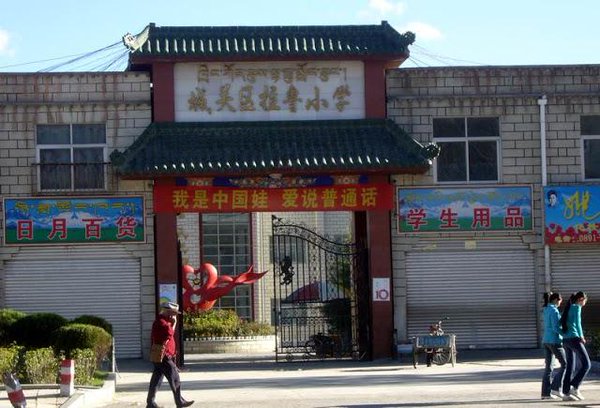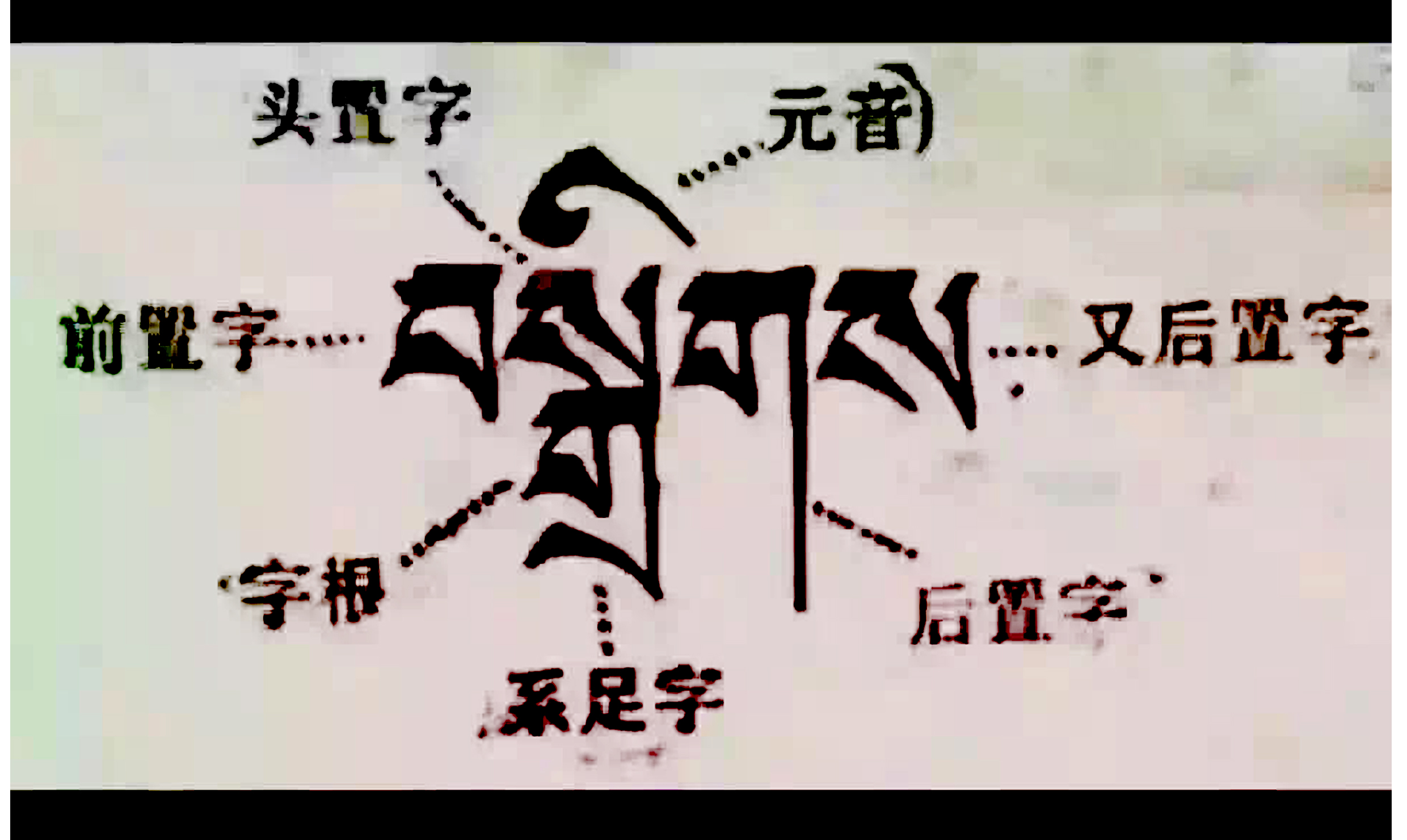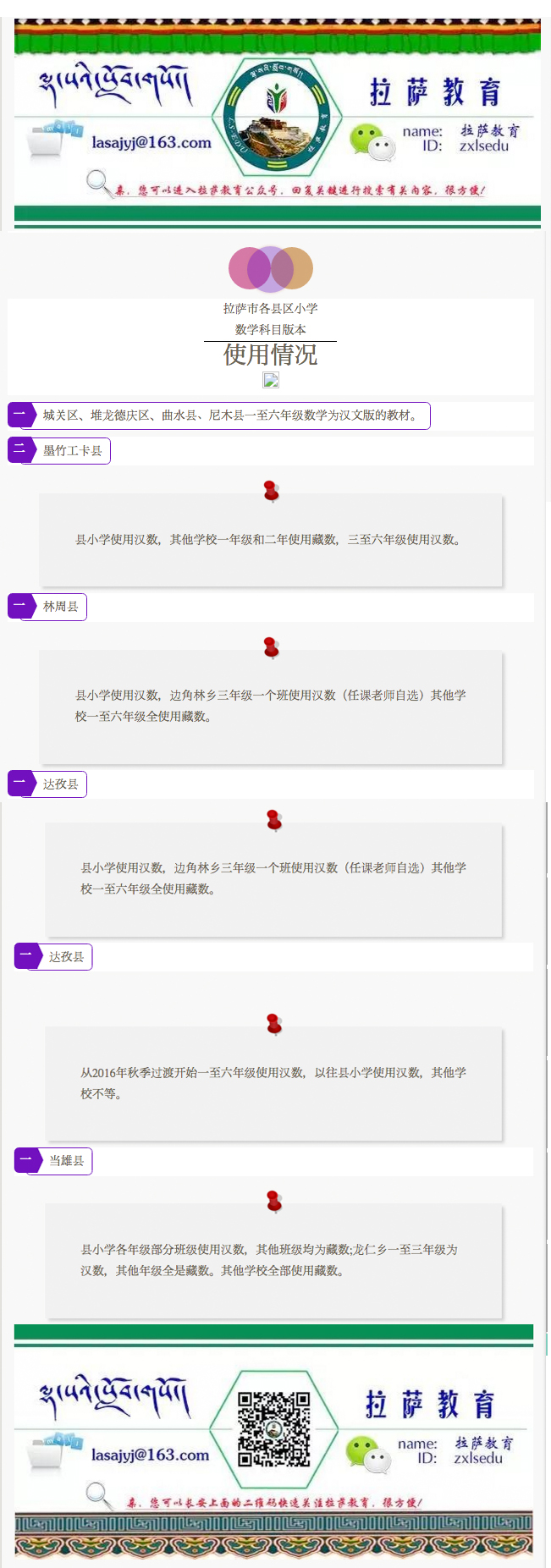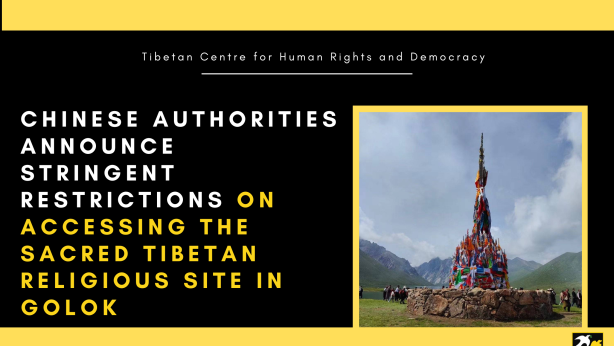Bilingual Education with Chinese Characteristics: China replacing Tibetan textbooks with Chinese

In keeping with its assimilationist policy, Chinese authorities have recently introduced mathematics textbooks in Chinese language in a number of primary schools to gradually replace the Tibetan version in Tibet Autonomous Region (TAR).
Recent media reports exposed steps taken by the TAR education department to introduce Chinese language mathematics textbooks for Tibetan primary school children that have caused deep concern among educated Tibetans some of whom have expressed their concern in writing on online platforms.
Chinese authorities in TAR have explained the move as necessary to “improve the efficiency of learning” adding that if the mathematics textbooks were printed in Tibetan, “the program will become complicated.” Information about the introduction of Chinese language mathematics textbooks appeared in an article titled “The Status of Primary-level Mathematics Textbooks in Counties of Lhasa” on a social media blog called ‘Lhasa Education’. The article revealed that in Lhasa Chengguan District and the counties of Toelung Dechen (Ch: Duilongdeqing), Chushur (Ch: Qushui) and Nyemo, mathematics textbooks in Chinese have been introduced for students from Grade 1 to 6.
Chinese language mathematics textbooks have also been introduced in primary schools located in the Meldrogungkar (Ch: Maizhokunggar) County town. In schools located in other parts of Meldrogungkar County, Tibetan version still exist for Grades 1 and 2 although the Chinese version has been introduced from Grade 3 to 6. In Lhundup (Ch: Lunzub) County, the Chinese version is available at primary schools in the County town and also for Grade 3 in Paljorling Township. In other parts of the County, the Tibetan version is still available for students from Grade 1 to 6. In Taktse (Ch: Dazi) County, Chinese version will be introduced from this year’s Fall semester. Both Tibetan and Chinese versions are available in primary schools across Damshung (Ch: Damxung) County town and Lungring Township where Chinese version is available from Grade 1 to 3.
Zhu Yun, the deputy head of the TAR education department in a June 17 interview with Global Times did not deny that mathematics textbooks in Chinese had been introduced in Tibetan primary schools, instead he said primary schools in the region could choose either version with the same content. He added that the authorities have no plan to replace the Tibetan version. It was also reported in July 2015 by official Chinese media that bilingual education from kindergarten to higher education has been introduced in 99 percent of schools in TAR, with 97 percent of TAR students receiving bilingual education.
Zhu Yun’s denial of replacing Tibetan language textbooks with Chinese does not hold much water in light of a recent article posted online by Jampa Dekhang, a Tibetan legal professional based inside Tibet. In the article titled “Who Took Away Tibetan Children’s Right to Tibetan Education?” Jampa Dekhang wrote that as someone belonging to the legal profession, he would never promote or endorse any information that was not true. He added that the information released on ‘Lhasa Education’ online platform was true, before making a strong and detailed argument in favour of a mother tongue based education in Tibetan schools.
China’s plan to replace Tibetan language education with Chinese, under the guise of bilingual education, became apparent in 2011 when Peking University professor Ma Rong wrote about the implementation of the policy in TAR that put more stress on Chinese language education. In the article titled “Tibet’s Social Development and Bilingual Education”, Ma wrote that after 1980s, authorities in TAR put more emphasis on the use of Tibetan language in all spheres with Tibetan used as medium of instruction in education. But the situation was later reversed, added Ma, with more attention paid on promoting Chinese language and making Chinese the medium of instruction. These changes are being implemented from urban to rural areas, with Chinese medium education introduced first in County towns and gradually moving into schools located in rural areas such as nomadic and farming communities.

In recent years, Chinese authorities have implemented two models of bilingual education in Tibet – either using Tibetan or Chinese as a medium of instruction. The objective is to replace Tibetan with Chinese as the main medium of instruction in Tibetan schools across Tibet. Tibetan language education is used mainly in rural schools while in urban areas such as County towns, some classes at primary and secondary levels use both Tibetan and Chinese as medium of instruction. Particularly in Chinese medium schools at primary, secondary and senior secondary levels in TAR, the number of Tibetan students has increased over the years. The ulterior motive behind the so-called bilingual education is most apparent in crèches where Tibetan toddlers are taught Chinese before they learn to speak properly in their mother tongue. China’s 13th Five-Year Plan (2016-20) will see a total of 250 bilingual kindergartens set up in rural areas across TAR. At present, there are 882 kindergartens with 87,951 students in TAR.
Last week, Chinese media reported that the government would send 30,000 teachers from other areas of China to work in Tibet and Xinjiang by 2020, taking away the job of over 90 percent of local science teachers, who will receive off-the-job training. This project is part of a guideline issued by the General Office of the State Council to “boost the development of education in PRC’s central and western regions.” In Lhasa, Chinese authorities have established two experimental’ schools with investments worth 200 million yuan from Beijing and Jiangsu province. Student enrolment at the Lhasa Beijing Experimental High School and the Lhasa Jiangsu Experimental High School began since the second half of 2015. All teachers and staff at these schools are Chinese from Beijing and Jiangsu. At the Lhasa Jiangsu Experimental High School, out of 2350 students enrolled, 90 percent is Tibetan. In the name of education development, these are some examples of a calculated move on the part of the Chinese authorities to eventually replace Tibetan medium education with Chinese.
Recently, a photo of a Tibetan word appeared on social media including explanations in Chinese of Tibetan vowels, consonants and alphabetical usage pertaining to the particular word. Sources told TCHRD that the photo is example of how Tibetan children in Meldrogungkar are taught Tibetan using Chinese language. If this is true, it shows to a large extent the status of Tibetan language in Tibet today and a strong indication of Chinese becoming the main medium of instruction to the point that it is used to teach Tibetan language.
As part of its assimilationist agenda, Chinese authorities have implemented various policies and campaigns to undermine and make irrelevant Tibetan identity, religion, culture and language. Since 1984, a number of Tibetan schools were established in Chinese towns and cities to provide ‘quality education’ to Tibetan children. Tibetan children have been sent to study in these distant schools mainly to get Chinese-oriented education, removed from their home environment. Latest figures released by Chinese government show that there are 17 junior middle schools attended by Tibetan students from TAR in 12 Chinese provinces and cities. In the past 30 years, out of 137 schools and professional training schools for TAR students located in 21 Chinese provinces and cities, 18100 Tibetan students have permanently stayed back. At present, every year 1620 junior middle school students and 3000 senior middle school students from TAR are sent for education in China. Since 2010, an additional 3000 students annually have been sent from TAR for professional studies in Chinese provinces and cities. In total, 31 different schools to educate Tibetan students from TAR have been set up in 21 Chinese provinces and cities. This program to educate Tibetan children in Chinese provinces and cities is also implemented in other Tibetan areas outside TAR such as Tibetan province of Kham and Amdo located in present-day Gansu, Sichuan, Qinghai and Yunnan.
In Xining, capital of Qinghai Province, for years local Tibetans including Tibetan officials and cadres, teachers and parents have petitioned local government authorities, Qinghai people’s congress, Qinghai CPPCC members and NPC deputies calling for the establishment of a Tibetan medium primary school in Xining city that has over 30000 Tibetan children. Although the proposal was discussed at the highest level, no action was taken to fulfil the request.
Over the years, Chinese authorities have adopted an extremely suspicious and hostile attitude towards voluntary community projects initiated by Tibetans inside Tibet to protect and promote Tibetan language and culture. Many Tibetans have been arbitrarily arrested, tortured, disappeared and imprisoned on trumped up political charges when all they did was to establish Tibetan language schools, call for protection of Tibetan language and culture, write essays on Tibetan identity, and create songs that express pride in being Tibetan.

Generally the Constitution and Regional Ethnic Autonomy Law of the People’s Republic of China stipulate that all minority nationalities have the right to use and develop their own spoken and written languages. Particularly Article 37 of regional autonomy law provides that “schools (classes) and other educational organisations recruiting mostly ethnic minority students should, whenever possible, use textbooks in their own languages and use these languages as the media of instruction.” However, this stipulation is followed by a requirement that “beginning in the lower or senior grades of primary school, Han language and literature courses should be taught to popularise the common language used throughout the country and the use of Han Chinese characters.” Even so, the PRC’s Law on the Standard Spoken and Written Chinese Language provides in Article 8 that “the spoken and written languages of the ethnic peoples shall be used in accordance with the relevant provisions of the Constitution, the Law on Regional National Autonomy and other laws.” Further, in July 2010, China announced its first-ever national plan for medium and long-term education reform and development in the next 10 years called Outline of China’s National Plan for Medium and Long-term Education Reform and Development (2010-2020) to “enhance citizens’ overall quality, boost educational development in a scientific way, and speed up socialist modernization”. In a section called ‘Raising education quality of ethnic minorities’, the outline assures that “minority peoples’ right to be educated in native languages shall be respected and ensured.” But this assurance was preceded by an assertive declaration that “no effort shall be spared to advance bilingual teaching, open Chinese language classes in every school, and popularize the national common language and writing system [or Putonghua/standard Mandarin].”
The extinction of a nationality is closely linked to the degree to which its cultural and linguistic heritage and traditions is protected and promoted. The ongoing Chinese policy to tightly control the use and development of Tibetan language has direct repercussions on the continued survival of Tibetan cultural and religious identity. The Tibetan Centre for Human Rights and Democracy (TCHRD) calls on the Chinese authorities to stop implementing policies that advance its assimilationist agenda of turning Tibetans into Chinese. Tibetans have nothing against learning other languages but at the same time, Tibetans believe that mother tongue is the ‘carrier of culture’ and a mother tongue based education will ensure quality education for Tibetan children, as has been proven in scientific studies. Chinese government’s claim that modern subjects such as science and mathematics could not be taught efficiently in Tibetan is discriminatory and ignorant, that rejects the long history as well as depth and range of Tibetan language. TCHRD calls for the implementation of a mother tongue based bilingual education policy and respect for Tibetan people’s right to practice and promote its own language, culture and religion.
Sources:
- http://leaders.people.com.cn/n/2014/0619/c58278-25171282.html
- http://dailynews.sina.com/bg/chn/chnnews/ausdaily/20140818/19406008285.html
- http://www.tibet.cn/wap/education/tibetan_stu/14425602509.shtml
- http://www.xzxw.com/xw/kjww/201507/t20150712_691806.html
- http://www.chinanews.com/gn/2016/06-15/7904811.shtml
- http://news.xinhuanet.com/politics/2015-03/26/c_1114775641.htm
- http://www.tibetculture.net/2012zxyj/zxlz/201212/t20121223_1807384.html
- http://news.tibetcul.com/jy/200801/11066.html
- http://blog.tibetcul.com/home.php?mod=space&uid=15407&do=blog&id=265156
- http://www.xzxw.com/yz/yzzx/201510/t20151016_864289.html


